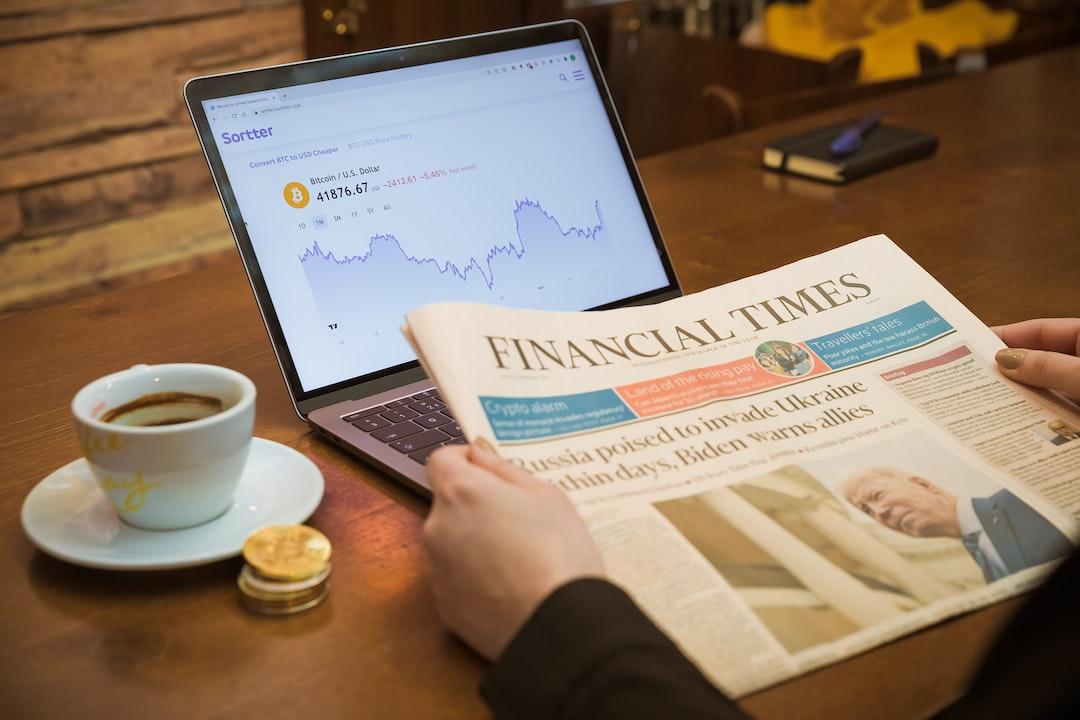Recently, Devin Finzer, the CEO and co-founder of OpenSea, the former “unicorn” of the NFT trading market, revealed that OpenSea has received acquisition intentions and is open to potential acquisition deals, but did not specify when or by whom the acquisition would take place. Why did OpenSea’s market value shrink by 90% in just two years? What are the potential variables in the future of the NFT trading market?
Summary:
OpenSea Seeks Acquisition? CEO: Open to Consideration if Suitable Deal Arises
Background:
OpenSea’s Valuation Plummets by 90%! CEO: Developing 2.0 Upgrade, Still Bullish on Ethereum NFT
Table of Contents:
OpenSea: From a Valuation of Over 10 Billion to a “Toes Chopped” Situation
Evolution of the NFT Market Landscape
The “Vampire Attack” by LooksRare and x2y2
Blur: The True “Game Changer” in the NFT Market
New Trends in the NFT Market
In just two years, OpenSea went from being relatively unknown to being valued at over 13 billion USD, and then within another two years, its valuation “toes were chopped” by 90%, leading to considerations of selling itself. This roller coaster-like experience raises the question of what kind of journey OpenSea has undergone.
This is the true portrayal of OpenSea’s reality over the past four years. Just recently, Devin Finzer, the CEO and co-founder of OpenSea, revealed that OpenSea has received acquisition intentions and is open to potential acquisition deals, without providing specific details on when and by whom.
As a former “unicorn” in the NFT trading market, just like Uniswap and Dune, OpenSea is a startup miracle in the Web3 field, starting from scratch and quickly rising to prominence. Especially in the past two years starting from 2021, OpenSea’s valuation skyrocketed, going from being ignored to reaching a valuation of 13 billion USD, becoming the dominant player in the entire NFT market.
The story begins in January 2018 when OpenSea’s co-founders, Devin Finzer and Alex Atallah, established OpenSea as a platform for users to buy and sell NFTs. However, due to the NFT market being barren except for the short-lived hype of Cryptokitties, the platform’s user base and transaction volume remained low.
Until March 2020, OpenSea had only 5 employees, and the monthly transaction volume fluctuated around 1 million USD. With a commission rate of 2.5%, this meant a monthly revenue of only 28,000 USD. Fortunately, Animoca Brands invested 2.1 million USD at the end of 2019, allowing OpenSea to maintain financial balance.
OpenSea’s real takeoff began in 2020 when the co-founders saw a doubling of business volume by the end of the year. With the gradual recovery of the cryptocurrency market in the second half of 2020, OpenSea’s business volume rapidly surged, completing the mission ahead of schedule in September 2020.
Starting from 2021, the NFT bull market kicked off, and OpenSea’s active users and transaction volume soared. In July 2021, the transaction volume reached 350 million USD, and OpenSea secured 100 million USD in funding led by a16z, with a post-money valuation of 1.5 billion USD.
A month later, in August 2021, OpenSea’s transaction volume surged tenfold, reaching 3.4 billion USD and earning over 85 million USD in commission revenue.
From then until January 2022, OpenSea remained unchallenged, with monthly transaction volumes exceeding 3.5 billion USD, capturing 90% of the NFT market share, and reaching a valuation of over 13.3 billion USD. From a data perspective, OpenSea was undoubtedly the “too big to fail” player in the entire NFT market, surpassing Uniswap’s market share and influence in the DEX race.

However, this marked the pinnacle of OpenSea’s dominance in the NFT trading market. In June 2022, OpenSea’s monthly transaction volume plummeted from nearly 2.6 billion USD in May to less than 700 million USD. Currently, OpenSea’s monthly transaction volume has decreased to 120 million USD, a drop of over 95% from its peak in January 2022.
According to reports from Bloomberg, Tiger Global Management has marked down the value of its shares in OpenSea by 94%, and Coatue has adjusted the value of its OpenSea shares by 90%, to 13 million USD, representing a significant decline.
The heaviest blow to OpenSea came from the new dominant player in the NFT trading market, Blur, which now holds over 70% of the market share. Blur, launched in late 2022, quickly surpassed OpenSea and became the largest NFT marketplace.
According to data from Dune, as of the time of writing, Blur had a market share of 73.7%, ranking first, while OpenSea had a market share of 21.7%, ranking second.

Looking back at the evolution of the NFT market landscape and the disruptive power of Blur, it is not surprising to see these changes.
Firstly, OpenSea’s rise can be attributed to its early advantage and perseverance during the low period. However, in the face of OpenSea’s dominant position in the NFT trading market, competition and “vampire” attacks among NFT marketplaces in terms of product dimension and user dimension have been ongoing.
As we know, the Web3 and crypto world currently have an obvious trend: more and more similar projects in DeFi, NFT, blockchain games, and infrastructure, but with severe homogenized competition. The differences among them are mainly limited to names, UI, token incentives, and transaction fees.
“In market competition, it is not important who copies whom, but who is the first.” This especially applies to Web3, as proven by the vampire attack by Sushi on Uniswap in the past.
Therefore, starting from 2022, “OpenSea killers” like LooksRare and x2y2 began focusing on the fact that OpenSea had not issued its own token. By offering token distributions as incentives, they temporarily gained relative advantages. However, after the airdrop frenzy subsided, they were unable to truly challenge OpenSea’s position.
Blur emerged in late 2022 and introduced a Bid Airdrop, which went beyond the incentive mechanism of transaction rewards and completely solved the problem of low liquidity in the NFT market. The Bid Airdrop incentivizes users to make offers, with greater rewards for offers closer to the floor price. Essentially, it subsidizes bidders using tokens from the “bagholders” of secondary market tokens. This is similar to the rise of Aave, which benefits from protocols that help large holders “sell.”
Looking at the development trajectory of the past year, Blur and its founder, Tie Shun, can be considered the top “game changers” in various mature fields:
In the NFT trading race, Blur disrupted OpenSea, slashing its valuation from 13.3 billion USD to 1.4 billion USD.
In the NFT lending race, Blend’s total loan transactions exceeded 4.6 billion USD, making it the market leader.
In the L2 race, Blast’s TVL surpassed 1.78 billion USD, second only to Arbitrum (12.34 billion USD) and Optimism (6.6 billion USD), surpassing Base, zkSync, and other L2 solutions, ranking in the top three.
There have been some emerging variables since 2023. First and foremost is the rise of Bitcoin NFTs represented by Ordinals, which has sparked a new wave of “BitcoinFi” and reached new heights in the trading activity within the Bitcoin ecosystem.
According to Cryptoslam data, the past 30 days saw Bitcoin NFT sales on the Bitcoin blockchain reach 238 million USD, making it the second-largest blockchain in terms of NFT sales, surpassing Solana (232 million USD) and Polygon (50.03 million USD), and only behind Ethereum (456 million USD).

According to the latest data from Dune, as of February 16th, Ordinals has generated accumulated fees of over 6,150 BTC, exceeding 320 million USD.
This has also led to the rise of Bitcoin-based NFT trading markets such as OKX Web3 Wallet’s Ordinals Market and UniSat NFT Market. As of last week, the total trading volume of OKX Web3 Wallet’s Ordinals Market has exceeded 1.3 billion USD.
Furthermore, since the second half of 2023, the NFT market seems to have gradually stabilized, with the floor prices of many blue-chip NFTs starting to rebound or surge. The Solana ecosystem has also entered a new cycle of speculation in the NFT sector.
At the same time, similar NFTs like ERC404 have reemerged. As a “new asset” with dual characteristics, these types of NFTs can be traded on both OpenSea and Uniswap. This may have a significant impact on the future of the NFT market landscape.
It is worth noting that Uniswap previously acquired the NFT trading marketplace Genie, signaling its clear entry into the NFT trading market. Genie aggregates transactions from other NFT marketplaces, while Uniswap provides trading depth.
Overall, the competition in the NFT market has been focused on product dimension and asset dimension. Blur’s product dimension innovation through liquidity incentives dealt a blow to OpenSea and other old-generation NFT trading platforms in the first half of 2023.
Meanwhile, OKX, UniSat, and others have quickly risen in the second half of 2023 by leveraging new asset categories like ERC404, opening up new territories.
As we enter the beginning of 2024, the rising ERC404, as a new asset type, may give traditional token trading protocols like Uniswap a new entry ticket to the NFT market, potentially disrupting the NFT market landscape in 2024. This is worth paying attention to.
Related Reports:
Tiger Global, the king of crypto investment losses: OpenSea down 94%, BAYC down 69%, FTX investment zeroed
OpenSea’s Mass Layoffs vs. Blur’s Surge: What Changes Are Happening in the NFT Exchange Competition?
OpenSea’s Trading Volume Hits a Two-Year Low! Major Blue-Chip NFTs Continue to Struggle, Only “Fat Penguins” Rise Against the Trend.

